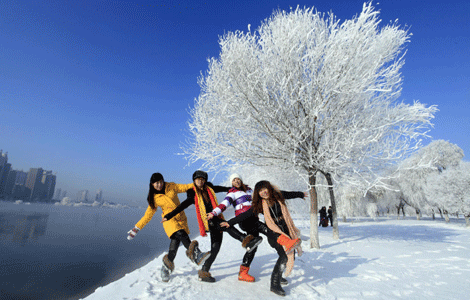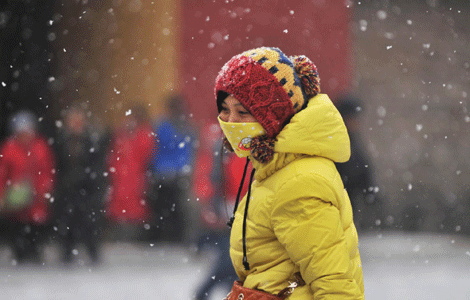
XINING - A decline in the number of predatory birds has prompted more Tibetans in northwest China's Qinghai province to turn from sky burial to cremation, once a privilege for high lamas.
A funeral home perched on a hillside in Gonghe county of the Tibetan and Mongolian prefecture of Hainan has opened four gilded pagoda-shaped cremation facilities to meet the growing demand for Tibetan-style cremations.
In line with Tibetan traditions, funeral rites are held at night and witnessed only by family members. They pose the deceased to resemble a sleeping infant before the cremation, collect the ashes and then hang sutra streamers outside the funeral home to pray for the soul's departure.
"The date of the funeral is determined by high lamas and the entire process must be completed before daybreak," said Jamyang, curator of the funeral home.
Jamyang said the facility was built in 1984 to serve Tibetans and Mongolians, with a growing number of residents visiting the place for cremation arrangements in recent years.
"Ten years ago, we held an average of 170 funerals a year, but the number increased to 380 last year and has continued to rise this year," said Jamyang.
For centuries, cremation remained a privilege for high-ranking Buddhist monks, as firewood is scarce on the Qinghai-Tibet Plateau, said Sonam, an abbot from the Academy of Buddhism based at Gyegu Monastery in Qinghai's Yushu county.
He said commoners often chose excarnation, or sky burial, a traditional funeral rite in which bodies are fed to vultures and other predatory birds. The rite is regarded as an act of generosity, an important virtue for Buddhists.
But as modern medical facilities are more easily available in Tibetan communities and more Tibetans spend their last days in hospitals, the traditional funeral rite is proving less convenient.
"The predatory birds seem to reject the smell of medicine and disinfectant, and sometimes stay away from the bodies," said Wang Jun, an official with Qinghai province's civil affairs bureau.
Meanwhile, the use of rat poison to ward off pests has caused a sharp decline in the number of vultures, said Wang.
Wang and other government officials took the opportunity to promote cremation as an alternative, as it is environmentally friendly and consistent with the teachings of Tibetan Buddhism.
The majority of Tibetans are devout Buddhists and believe in rebirth. They see no need to preserve the body, which is considered an empty vessel after death.
Therefore, cremation is more easily accepted by Tibetans than Han people in many parts of China's rural interior provinces, said Wang.
In many parts of China's countryside, elderly people believe the body must be kept intact and buried in the soil for the soul to rest in peace. The scarcity of arable land forced an official campaign starting in the 1980s to replace tomb burials with cremation, although many rural people still reject cremation.
"The practice, however, is well accepted by Tibetans, as cremation is also in line with their traditions," said Wang.
The funeral home, which was consecrated by the 10th Panchen Lama, has replaced firewood with diesel fuel to cut costs. Cremation services cost 680 yuan (109 U.S. dollars).
Tsewang Dongdre, a living Buddha from Yushu prefecture, said the cost was lower than that of a sky burial because in the latter practice, the yak that carries the body to the excarnation site must be set free. An adult yak is worth at least 4,000 yuan, a hefty amount for most families.
As the first Chinese province to promote cremation among Tibetans, Qinghai has spent 150 million yuan to build 11 crematoriums in predominantly Tibetan areas since 2010.
Officials insist the move will not threaten traditional Tibetan burial customs.
"Sky burials are certainly not banned. We are just offering Tibetans more funeral options to ensure that the deceased are respected and the living are consoled," said Wang.







